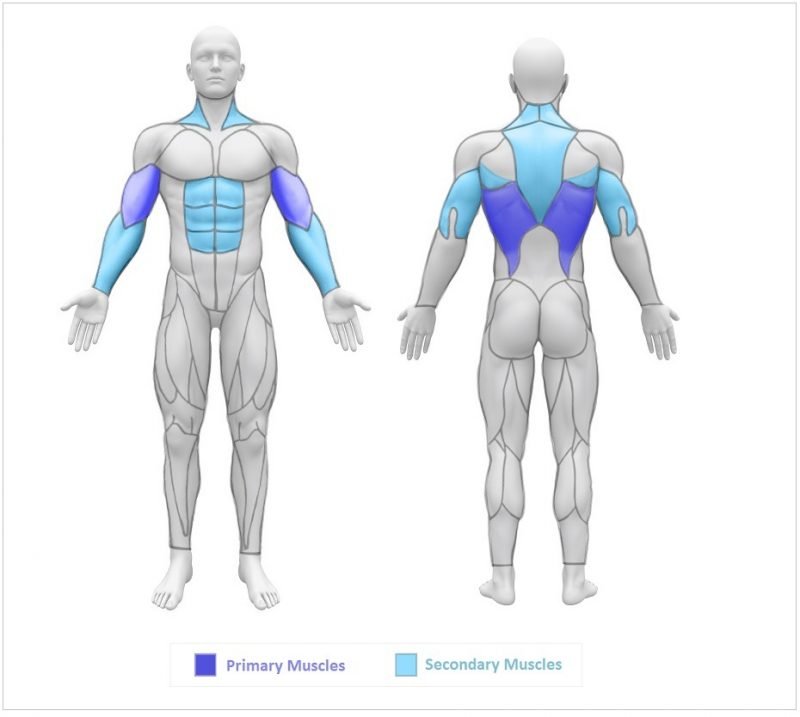We’ve all been here: in front of you hangs a metal bar dauntingly suspended a couple of feet in the air — and you think to yourself, how do I do a pull-up?
Muscles used during a pull-up excercise. Image from [1].
For those who don’t yet know how to do a pull-up, there’s a long road ahead. But just like any other exercise, with proper training, mastery is possible by properly activating the groups of muscles involved through repetition. The muscle groups most involved in the pull-up are the rectus abdominis (one of the many muscles that constitute the core) latissimus dorsi (lats), middle and lower trapezius (traps), and biceps brachii (biceps) [1]. It’s especially important to understand the physiological aspects of each exercise to find the most effective ways to master it in the least amount of trips to your local gym.
Image from [2].
Pull-up training begins with kneeling lat pulldowns. This variation of a lat pulldown, which is a common workout that targets your shoulder and back for an upper-body workout, activates muscles to a similar magnitude and pattern as pull-ups, more so than other exercises such as assisted pull-ups and seated lat pulldowns [3]. To properly perform a kneeling lat pulldown, you first kneel and use an overhand grip on a lat pulldown attachment. Afterward, set the weight until it is heavy enough to pull your knees above the ground by about an inch. Then, for the actual pulldown part, make sure that your back is aligned straight and pull your shoulder blades together to achieve maximum muscle activation. Make sure to do 3 sets of 5 reps!
Another great exercise is a negative pull-up, which essentially constitutes the downward half of the pull-up. Many studies have shown that this “negative” portion of the exercise (known as eccentric exercise) might be more effective at building muscle than performing the entire rep [4]. The negative pull-up is especially suited for beginners. Even though you might not have the strength for the upward part of the pull-up, many will have the strength to execute the downward motion with the right technique. To properly perform a negative pull-up, you first raise yourself to the top of the pull-up position using a stool or other high platform and simply do 5 sets of 1 rep [1].
With these two exercises, you will begin to see progress in your pull-up attempts. It might take a while, but we all have to start somewhere!
References
[1] AMM Fitness. https://www.ammfitness.co.uk/information-advice/pull-ups-benefits-muscles-worked (accessed Nov 15, 2021)
[2] Fitness Lane. https://fitnesslane.com/product/kneeling-lat-pulldown/ (accessed Nov 15, 2021)
[3] Hewit J.K.; Jaffe D.A.; Crowder T. A Comparison of Muscle Activation during the Pull-up and Three Alternative Pulling Exercises. J Phy Fit Treatment & Sports [Online] 2018, 5.4, 1-7. https://juniperpublishers.com/jpfmts/JPFMTS.MS.ID.555669.php (accessed Nov 15, 2021).
[4] Hedayatpour N.; Falla D. Physiological and Neural Adaptations to Eccentric Exercise: Mechanisms and Considerations for Training. BioMed Research International [Online], 2015, 2015. https://doi.org/10.1155/2015/193741 (accessed Nov 15, 2021)
[5] Muscle & Performance. https://www.muscleandperformance.com/training/killer-pull-up-workouts/ (accessed Nov 15, 2021)



